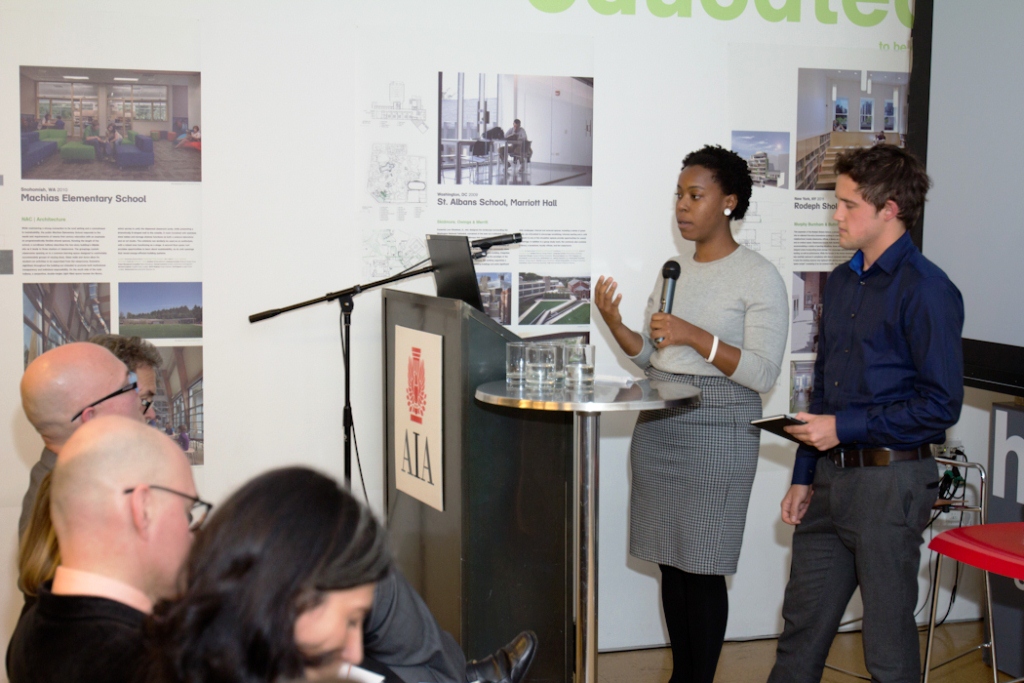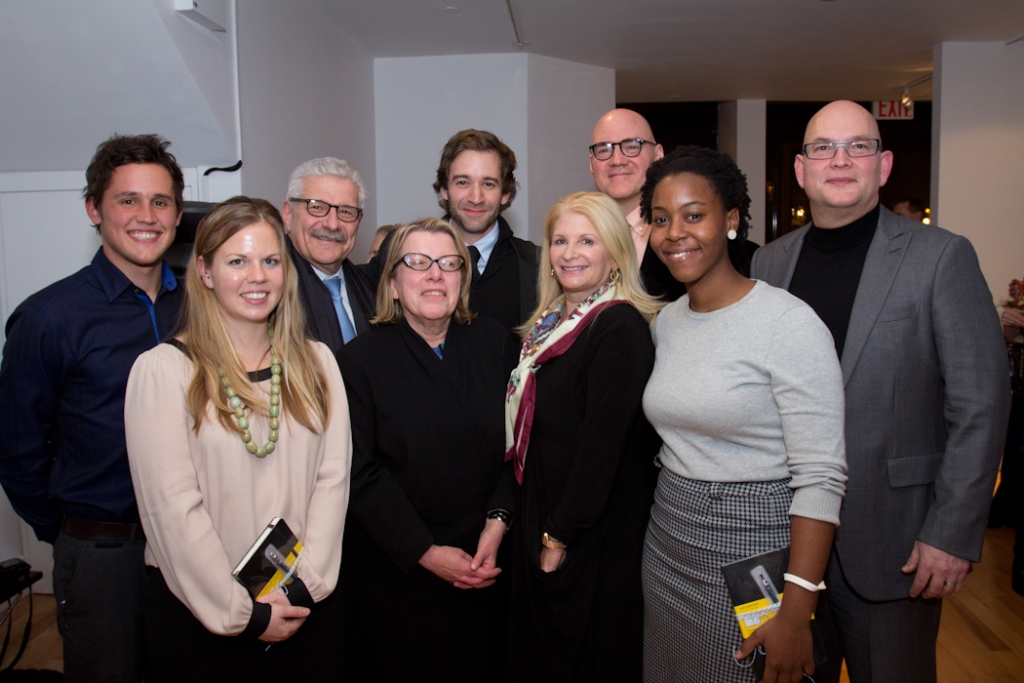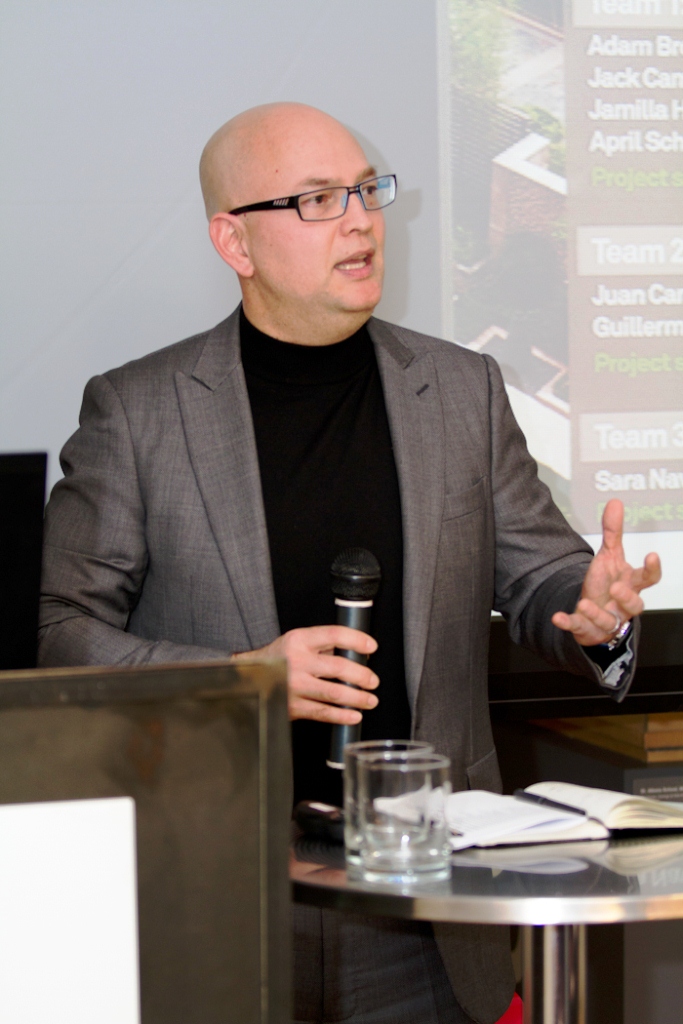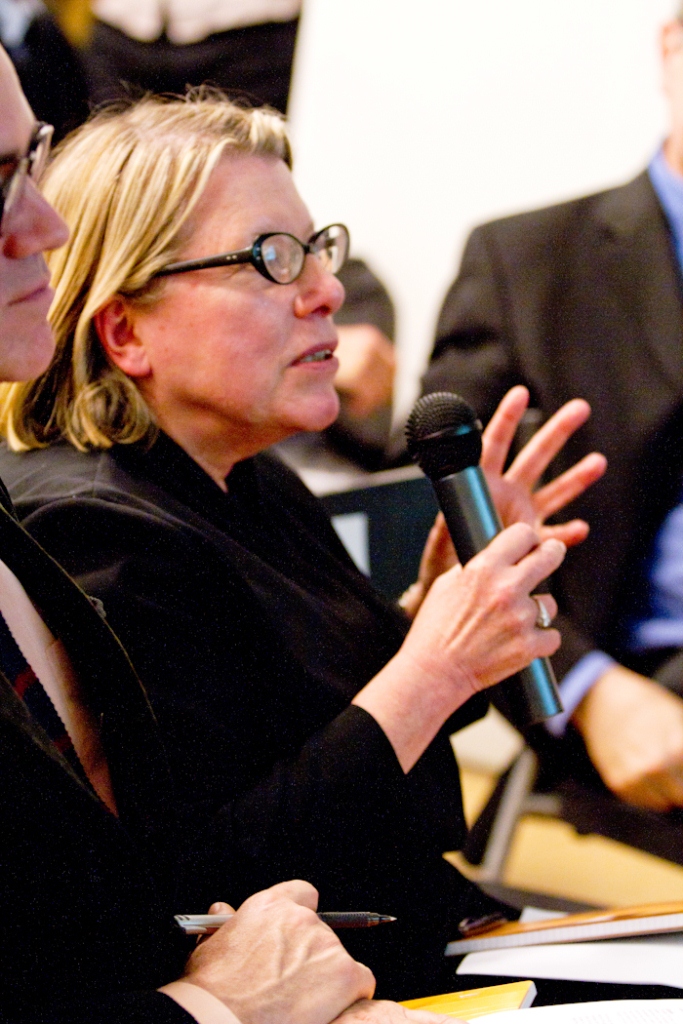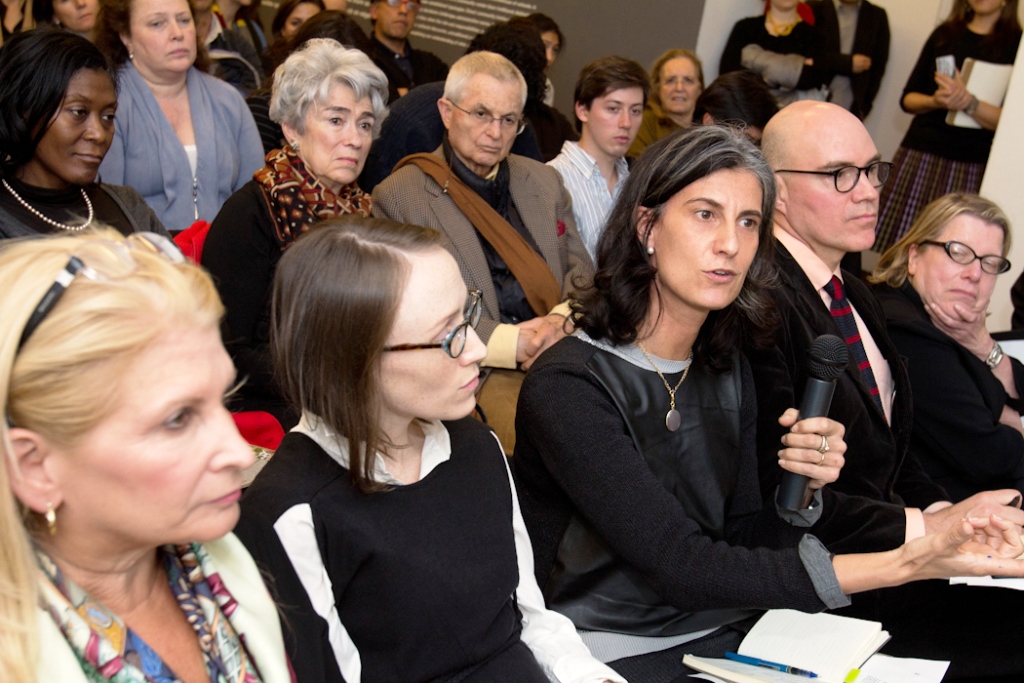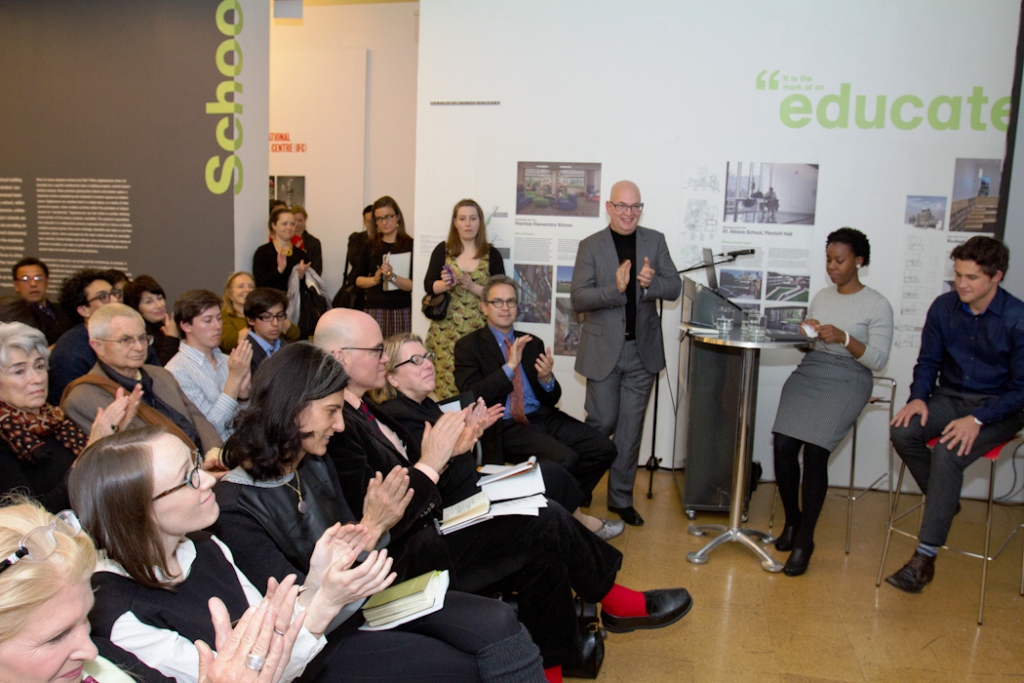by Murrye Bernard Assoc. AIA LEED AP
AECOM hosts an annual international competition called Urban SOS and invites teams of students from a variety of disciplines to tackle the topic of urban sites in distress. This year’s theme “Frontier Cities” called for solutions for cities in a border or edge condition, whether in the physical, political, cultural, ecological, or economic sense. “At AECOM, we’re obsessed with cites,” explained Bill Hanway, AIA, Executive Vice President, Buildings + Places, and this competition seeks to solve the greatest challenges of rapid urbanization from the lack of housing to infrastructure.
The competition drew entries from over 60 countries. AECOM internally narrowed the selection down to three finalist teams, who then presented their schemes before a jury at the Center for Architecture.
Team 1 was composed of four members from around the world, and they presented their entry titled “Unslumming Kibera,” which addresses a neighborhood in Nairobi, Kenya.The area, which measures roughly the size of Central Park, developed rapidly and is now populated by anywhere from 250,000 to 1 million people (numbers are disputed due to local political issues). The team conducted workshops to gain input from community members to form the basis of their proposal. They do not propose razing the slums, but rather building Sustainable Slum Neighborhood Developments (SSND), which incorporate amenities such as playgrounds, multipurpose space, and sanitized water. They suggest raising foundations by wedging gabion walls against the bedrock to mitigate flooding caused by the area’s rapid growth.
The two members of Team 2, whose proposal is titled “Green Terraces,” chose as their site an area within their home country of Colombia on the Bogotá-Soacha border. Slums have been built on steep hillsides and are prone to landslides, which have affected 16,220 families in past two years. As a solution, the team proposed constructing affordable housing units with terraced landscapes modeled on the city of Machu Picchu. The terraces allow families to plant fruits and vegetables to consume and potentially profit from the harvest.
Team 3, a single student, Sara Navrady, presented a proposal titled “Sewage Ecologies/Economies” for the site of Riberas del Bravo, a neighborhood at the edge of Ciudad Juarez, Mexico, near the US border. It is situated along an open sewage canal – ironically, the most scenic feature of the area, according to Navrady. Though the area once experienced rapid growth with influx of workers to local mills, the shift of production to China coupled with drug violence has caused residents to move north, leaving many houses abandoned. Navrady identified a lack of adequate public space and proposed creating pedestrian promenades along the canal, as well as constructing wetlands and drainage swales to purify and control the water.
Following the presentations and crit sessions, the jury briefly deliberated (they had reviewed the projects before the presentations) and then announced the winner during the reception. Hanway noted that while “the presentations were all very powerful,” the jurors chose Team 1 as the winning project. They will receive a $5,000 cash prize and a $25,000 donation from AECOM to help realize their project. The other two teams received honorable mentions (2nd place went to Team 3, and 3rd place to Team 2); each will receive $5,000 cash prizes. An exhibition of the students’ is work on view at the Center through 02.11.13.
Event: Urban SOS: Frontiers – Jury and Exhibition Opening
Location: Center for Architecture, 01.16.13
Student Teams: Team 1, Unslumming Kibera: Adam Broidy, California College of the Arts; Jack Campbell Clause, Leeds Metropolitan University; Jamilla Harper, University of Nairobi; April Schneider, University of Illinois; Team 2, Green Terraces: Juan Camilo Pinzon, Universidad de los Andes and Guillermo Umana, Macquarie University; Team 3, Sewage Ecologies/Economies: Sara Navrady, Delft University of Technology
Jury: Rick Bell, FAIA, AIA New York / Center for Architecture; Bill Hanway, AIA, AECOM; Donna Walcavage, FASLA, AECOM; Chris Choa, AECOM; Alexandra Hardiman, The New York Times and Galia Solomonoff, Solomonoff Architecture Studio, Columbia University
Organizers: Center for Architecture and AECOM
Murrye Bernard is a freelance architecture writer and a contributing editor to Contract Magazine and e-Oculus. www.murrye.com
